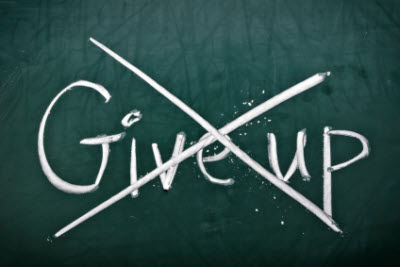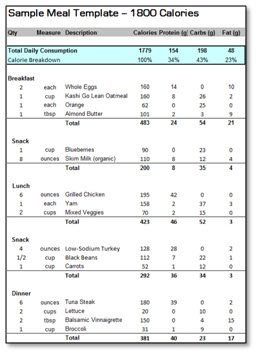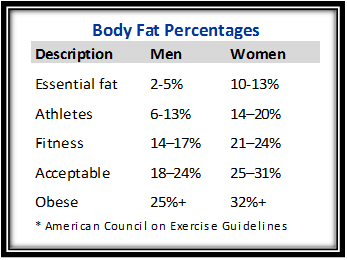Apologies, but this article begins as a bit of a rant.
Over the past 7 years, I have heard more bad fitness advice unknowingly disseminated by otherwise well intentioned people than I could possibly ever formulate responses to. Indeed, most of the time, I let my best wide-eyed, mouth agape, "you've got to be kidding me" face signal my reaction to the bits of training nonsense I come across on nearly a daily basis. (Enter here please, 99.9% of the low-carb pundits.)
As a certified personal trainer in both commercial gyms and private settings since 2002, and as an assistant coach with the de facto gold standard multisport company in Boise, Idaho,Performance High, LLC., I have been afforded much exposure to the many different fitness communities, from bodybuilders to weekend warriors to enduroletes, whose personalities are all as diverse as their fitness goals.
Being both a resource and a training partner for these many assorted, remarkable people has truly been the boon of my life. The only really annoying thing about the fitness industry as a whole is that it's almost completely unregulated.
Alleged fitness "advice" from self proclaimed guru's and loudmouth laymen alike swish and swill in the same bucket as founded, expert opinion from true professionals because, well, nobody can stop it. (Second entrance please, 99.9% of the low-carb pundits.)
And trust me, it gets tiring. Very, very tiring.
I have yet to meet another health professional who doesn't agree with me on this.
Over the past few years I've undertaken a personal mission: to seek out and correct misinformation floating around fitness communities and forums, in order to undermine the progress of these unqualified folks as they slowly fill innocent minds full of farcical fitness tips.
Without further ado, here are some of the best 10 training tips you'll ever hear, aggregated by myself from my experience working closely with many practiced health and fitness experts. These tips come from long time bodybuilding coaches, knowledgeable conditioning experts, registered dietitians, physical therapists, experienced personal trainers, and elite multisport coaches, and are good bits of wisdom to keep in your back pocket no matter what your sport or goals.
1 / Know Your Limits
Seriously, know your personal limits. I can't tell you how many times I've seen somebody give up too early or get hurt during training or racing because they simply had no idea what their real thresholds were. The whole idea behind training and/or competing is to push your thresholds to the limits to fulfill your potential. If you don't know what your limits are, how can you possibly know what your potential is?
How do you figure out your limits? It's not easy, and it's the #1 reason why people hire coaches. Experiment with training variable until you establish your comfort zone, and then systematically push out of that zone to force adaptation. If you're competing in your comfort zone, then you're not trying hard enough.
2 / No Pain, No Gain
You would think that this myth has been beaten to death or at least shooed from popularity, but I hear it surprisingly often from people who honestly believe that they need to kill themselves every day during training to maximize their workouts.
Don't do that.
Is your resting heart rate jacked up today? Are you too sore from your last workout to walk? Did you only sleep a few hours the last night? Skipped breakfast and lunch? Congrats, you just earned yourself a rest day. In other words - go home. You aren't going to get anything but an increased risk of injury by training in any one of these conditions.
Forget about fighting through the pain.
Discomfort is your body telling you that you've stepped well out of your comfort zone. Pain is your body telling you to knock off whatever you're doing. If you're an endurance athlete, listen to it.
3 / The Farce Of The Low-Carb Diet For Athletes
True, monitoring carb intake is one of the best ways to play around with your weight, I don't dispute that. I do it myself, and it can be a powerful tool for people who need to lose a significant amount of weight. But the everyman athlete has no need to go bonkers cutting out all kinds of carbs just for the sake of it, because that sort of eating behavior is not sustainable for an endurance athlete.
Atkins crazed low-carb lifestyle promoters need to buy a clue. Carbohydrates are absolutely essential to your diet, especially if you're an athlete.
There are no such things as good carbs or bad carbs - just too much carbs! If you're an athlete on a low carb diet, you're basically sabotaging yourself. Good luck topping off your muscle glycogen stores by eating a protein and fat centric diet.
Put the proverbial fork in this one - this fad diet has finally bit the dust amongst athletes who know better. Next time your spin instructor starts touting the amazing low-carb lifestyle he or she leads, throw your used sweat towel at them and switch gyms.
4 / Create Variety In Your Training
Any good training regimen needs to include variables that can be toggled to alter training for specific purposes. A weight lifter, for example, would take into consideration their specific exercise techniques, pounds lifted, sets per lift, reps per set, tempo per rep, rest between reps, rest between sets, emphasis between concentric, eccentric, and/or static contractions, number of sets, set order, supersetting, and so on, ad nauseum.
That's a lot to take into consideration, and by adjusting just a few of those variables you can focus your training down to hone in on your strengths or weaknesses.
Perhaps most important though, is that creating variety in your program keeps you from getting bored with what you're doing.
Obviously though, no matter how many variables you might switch around during, say, your bench press, if you are just plum bored with bench pressing, you're still stuck.
So don't be afraid to completely switch around your workouts to keep yourself entertained and sharp. If you're an endurance runner, toss some speed work into the mix, or vice versa. If you're a power lifter, mix in some yoga.
Adding variety is the best way to keep yourself on track without getting bored, as well as a great way to keep your body sharp by forcing it to adapt to something new.
5 / Always Second Guess Yourself
That's right; always second guess your motives, your training, your goals, and your accomplishments. Keep a running tally of where you are, where you want to be, and what you need to do to get there. Don't kid yourself into thinking you can do this on autopilot - this needs to be a conscious effort.
Always ask why. Why am I running stairs? Why am I doing this particular exercise? Why is my 400 meter split time still not improving? Why did my trainer/coach have me do this? (If your coach can't answer this, get a new coach.)
Why did I just eat that whole pizza?
You get the picture.
6 / You Cannot Spot Check Fat
If I had a nickel for every time I heard this myth, I would be a very, very rich man.
The fact of the matter is that fat goes on to, and comes off of, your body the way it wants to, not the way you want it to. The only way around this is targeted liposuction.
A brief, fairly unscientific explanation will do for this one. You cannot work the fat off any specific area of your body because, well, you cannot work fat. People mistake that good old muscle burn for something that magically removes adipose proximally from wherever it burns. Those were your oblique abdominals being worked, not the love handles next to them.
There are only two ways to shed those lbs, and they work best in tandem; diet and exercise.
Create a reasonable caloric deficit as often as you can while eating in a manner that's in line with your nutritional needs (a third curtain call please for the low-carbers) and get yourself into an exercise regimen that will help you maintain your lean body mass and prevent catabolism.
Unfortunately, you might as well just forget about zapping fat away one problem area at a time - that's not how the body works.
7 / You Need To Supplement Your Diet
Because of the specific training many enduroletes employ, many supplements are basically useless, or at best, cost prohibitive for endurance athletes. It's a much different game than, say, bodybuilding, where intensive supplementation is absolutely critical. The key is to understand the basics and use supplements that have real application for an endurance athlete.
It is quite difficult to achieve competitive success without proper supplementation. For example, you could easily replenish your carbs on an Ironman course with white bread and Fig Newtons, but you'd have to carry a backpack full of the stuff to ensure your calorie intake was adequate. It's much easier to supplement with a carb/sodium replacement gel.
If you're going to consider supplementing your diet, keep it simple. Think natural whey, soy, andcaseinate proteins, creatine monohydrate, electrolytes, BCAAs, recovery formulas, amultivitamin etc.
But just because you take a vitamin, don't think you can skip out on those leafy greens. Remember, the multivitamin is supposed to supplement your diet, not replace any part of it.
As a general rule of thumb, if you can't pronounce the ingredients, don't ingest it until you've done your homework to understand what it is! Take responsibility for what you put into your body.
8 / Play The Mental Game, Too
The best athletes in the world train not only their bodies, but their minds, for success in their sport. Why not take a page from their playbooks and do the same?
Visualize your goals, and visualize yourself achieving those goals. Imagine the emotions you might experience during a competition, and think how you can prepare for them. Visualize possible setbacks and visualize how you'll overcome them.
Visualize your success. Now give yourself an imaginary high-five.
9 / Plan For Adequate Recovery Time
You can't train 24/7, unfortunately. If we could, we'd all be stellar athletes. Between those beatings you place on your body, it needs time to recover.
Fill up your glycogen tank after a workout with carbs (do I have to even say it, carbophobes?) to prepare yourself for recovery and your next workout, get enough sleep every night, and drink more water than you think you need. In fact, if you think you've had enough water, drink more, because odds are you haven't.
Periodize your training - you can't go up, and up, and up, forever. You have to build in rest days or rest weeks to allow your body to get its bearings and adapt. Every season has to also have an offseason.
Train. Overreach. Recover. Adapt. Repeat.
10 / Set SMART Goals
This is simple enough, just like the nifty little acronym that helps us to remember proper goal setting, SMART. Make those goals Specific, Measurable, Attainable, Relevant, and Time bound.
Your goals must be all of those things for you to succeed. Write them down if you have to, and keep track of your progress.















